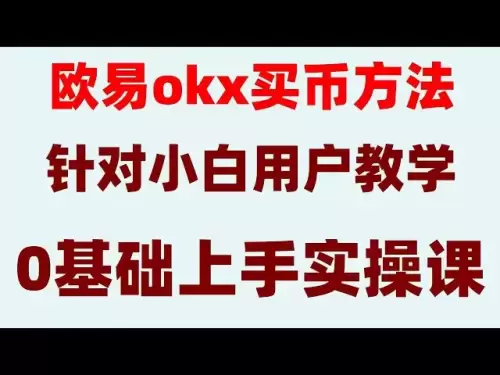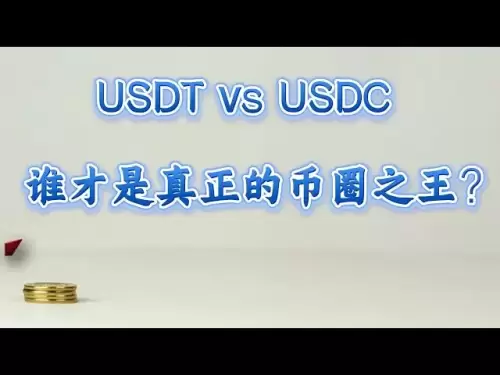-
 Bitcoin
Bitcoin $111,350.6129
2.52% -
 Ethereum
Ethereum $2,638.3695
5.10% -
 Tether USDt
Tether USDt $1.0000
-0.05% -
 XRP
XRP $2.4235
1.40% -
 BNB
BNB $681.1764
1.45% -
 Solana
Solana $177.9352
4.00% -
 USDC
USDC $0.9998
0.01% -
 Dogecoin
Dogecoin $0.2394
3.97% -
 Cardano
Cardano $0.8021
5.36% -
 TRON
TRON $0.2758
3.25% -
 Sui
Sui $3.8652
-1.21% -
 Hyperliquid
Hyperliquid $32.8241
17.04% -
 Chainlink
Chainlink $16.6651
4.39% -
 Avalanche
Avalanche $25.1059
9.72% -
 Stellar
Stellar $0.3029
3.99% -
 Shiba Inu
Shiba Inu $0.0...01522
3.20% -
 Bitcoin Cash
Bitcoin Cash $436.3699
7.46% -
 Hedera
Hedera $0.2050
4.05% -
 UNUS SED LEO
UNUS SED LEO $8.8681
0.29% -
 Toncoin
Toncoin $3.1558
2.61% -
 Polkadot
Polkadot $4.9039
3.11% -
 Litecoin
Litecoin $99.8009
3.60% -
 Monero
Monero $398.6334
2.16% -
 Bitget Token
Bitget Token $5.1932
-0.32% -
 Pepe
Pepe $0.0...01426
5.92% -
 Pi
Pi $0.8170
-1.65% -
 Dai
Dai $1.0000
0.03% -
 Ethena USDe
Ethena USDe $1.0005
-0.02% -
 Bittensor
Bittensor $469.6207
6.76% -
 Uniswap
Uniswap $6.3850
3.55%
How to judge WR overbought and oversold? How to operate when WR is passivated at a high level?
The Williams %R indicator, oscillating between 0 and -100, helps identify overbought conditions above -20 and oversold below -80, aiding traders in spotting potential market reversals.
May 22, 2025 at 10:42 pm
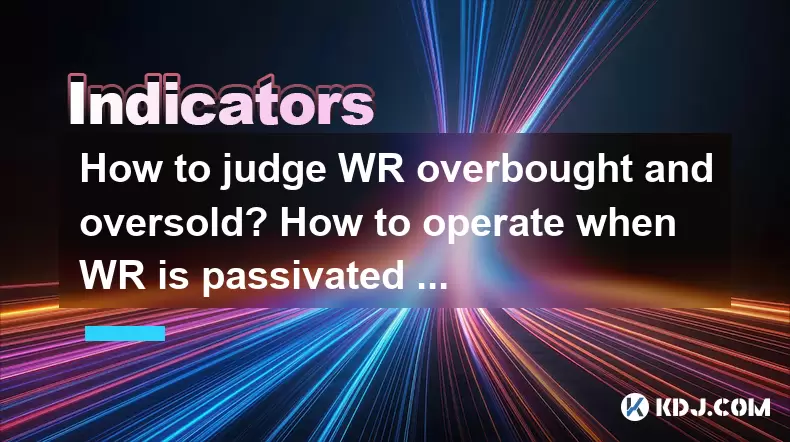
Understanding WR Indicator
The Williams %R (WR), also known as the Williams Percent Range, is a momentum indicator used in technical analysis to identify overbought and oversold conditions in the market. Developed by Larry Williams, this indicator measures the level of the close relative to the high-low range over a specific period, typically 14 days. The WR indicator oscillates between 0 and -100, with readings near 0 indicating overbought conditions and readings near -100 indicating oversold conditions.
Identifying Overbought and Oversold Conditions with WR
To effectively use the WR indicator, traders need to understand how to interpret its values. Overbought conditions are typically identified when the WR value is above -20. This suggests that the asset might be due for a price correction or reversal. Conversely, oversold conditions are indicated when the WR value falls below -80, suggesting that the asset might be poised for a price increase.
It's crucial to note that these thresholds are not absolute and can vary depending on market conditions and the asset being analyzed. Some traders might use -10 and -90 as more extreme thresholds for overbought and oversold conditions, respectively.
Operating When WR is Passivated at a High Level
When the WR indicator remains at a high level (i.e., above -20) for an extended period, it is considered passivated. This situation can be challenging for traders because it suggests that the market is in a strong bullish trend, and traditional overbought signals might not be as effective.
In such scenarios, traders should consider the following strategies:
Wait for Divergence: Look for instances where the price continues to rise, but the WR indicator starts to move away from its high levels. This divergence can be a sign that the bullish momentum is waning, and a reversal might be imminent.
Use Additional Indicators: Combine the WR indicator with other technical indicators like the Relative Strength Index (RSI) or Moving Average Convergence Divergence (MACD) to confirm signals. If multiple indicators suggest a reversal, the probability of a successful trade increases.
Adjust Thresholds: Consider adjusting the overbought threshold to a higher value, such as -10, to account for the extended bullish trend. This can help in identifying potential reversal points more accurately.
Practical Steps for Trading with WR
When using the WR indicator to make trading decisions, follow these detailed steps:
Set Up the WR Indicator: Open your trading platform and add the WR indicator to your chart. Ensure that the period is set to 14 days or adjust it according to your trading strategy.
Monitor the WR Values: Regularly check the WR values on your chart. Look for readings above -20 for overbought conditions and below -80 for oversold conditions.
Identify Divergence: If the WR remains passivated at a high level, look for divergence between the price and the indicator. This can be done by observing if the price continues to make higher highs while the WR fails to follow suit.
Confirm with Other Indicators: Use additional indicators to confirm any signals provided by the WR. For example, if the RSI also shows overbought conditions, it can strengthen the case for a potential reversal.
Execute Trades: Based on the signals and confirmations, execute your trades. For instance, if you identify a divergence and confirmation from other indicators, consider entering a short position if the market is overbought.
Common Mistakes to Avoid with WR
Using the WR indicator effectively requires avoiding common pitfalls that can lead to poor trading decisions. Some of these mistakes include:
Overreliance on WR Alone: The WR should not be the sole indicator used for making trading decisions. Always use it in conjunction with other technical analysis tools to increase the accuracy of your signals.
Ignoring Market Context: The effectiveness of WR thresholds can vary based on the overall market context. Always consider the broader market conditions and trends when interpreting WR values.
Chasing Every Signal: Not every overbought or oversold signal will result in a profitable trade. Be selective and wait for confirmations from other indicators to increase the probability of success.
Using WR in Different Market Conditions
The WR indicator can be applied in various market conditions, but its effectiveness can vary. In trending markets, the WR can help identify potential reversal points within the trend. In ranging markets, the WR can be particularly useful for identifying overbought and oversold conditions that often lead to price reversals within the range.
When using WR in trending markets, traders should be cautious of passivation at high levels and use additional indicators to confirm any reversal signals. In ranging markets, traders can use WR to enter trades at the extremes of the range, buying when the market is oversold and selling when it is overbought.
Frequently Asked Questions
Q: Can the WR indicator be used for all types of cryptocurrencies?
A: Yes, the WR indicator can be applied to all types of cryptocurrencies. However, its effectiveness can vary depending on the liquidity and volatility of the specific cryptocurrency. For highly volatile assets, traders might need to adjust the period and thresholds to better suit the market conditions.
Q: How often should the WR indicator be checked for trading decisions?
A: The frequency of checking the WR indicator depends on your trading strategy. For day traders, checking the WR every few hours or even more frequently can be beneficial. For swing traders, checking it daily or every few days might be sufficient. Always align the frequency with your trading timeframe.
Q: Is it necessary to use the WR indicator in combination with other technical indicators?
A: While it's possible to use the WR indicator alone, it's highly recommended to combine it with other technical indicators for better accuracy. Using multiple indicators can help confirm signals and reduce the likelihood of false positives, leading to more informed trading decisions.
Q: How can the WR indicator be adjusted for different timeframes?
A: The WR indicator can be adjusted for different timeframes by changing the period setting. For shorter timeframes, such as intraday trading, a shorter period like 7 or 9 days might be more suitable. For longer timeframes, such as swing trading, a longer period like 21 or 28 days could be more effective. Always test different settings to find what works best for your specific trading strategy.
Disclaimer:info@kdj.com
The information provided is not trading advice. kdj.com does not assume any responsibility for any investments made based on the information provided in this article. Cryptocurrencies are highly volatile and it is highly recommended that you invest with caution after thorough research!
If you believe that the content used on this website infringes your copyright, please contact us immediately (info@kdj.com) and we will delete it promptly.
- Bitcoin Pizza Day: 15 Years of the First Real-World Cryptocurrency Purchase
- 2025-05-23 03:40:13
- Ledger Unveils a Special Edition Flex Device Designed Specifically for Solana
- 2025-05-23 03:40:13
- FloppyPepe (FPPE) Is Extending Its Institutional Era As Global Banks Quietly Flip The Ledger Switch
- 2025-05-23 03:35:13
- As the digital asset market matures in 2025, attention is shifting from loud speculation to quiet yet powerful fundamentals.
- 2025-05-23 03:35:13
- XRP (XRP) Price Prediction: Will the Token Finally Reflect the Broader Bullish Tone?
- 2025-05-23 03:30:13
- Cardano (ADA) Continues to Emphasize Governance and Decentralization
- 2025-05-23 03:30:13
Related knowledge
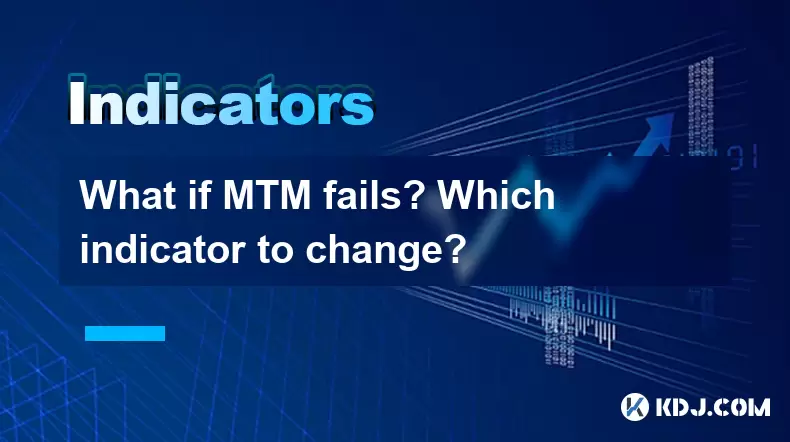
What if MTM fails? Which indicator to change?
May 23,2025 at 12:35am
Understanding MTM and Its ImportanceMoney Transfer Mechanism (MTM) is a critical component in the world of cryptocurrencies, especially when it comes to facilitating transactions between different parties. MTM ensures that funds move securely and efficiently from one wallet to another. However, like any system, MTM can sometimes fail, leading to delays,...
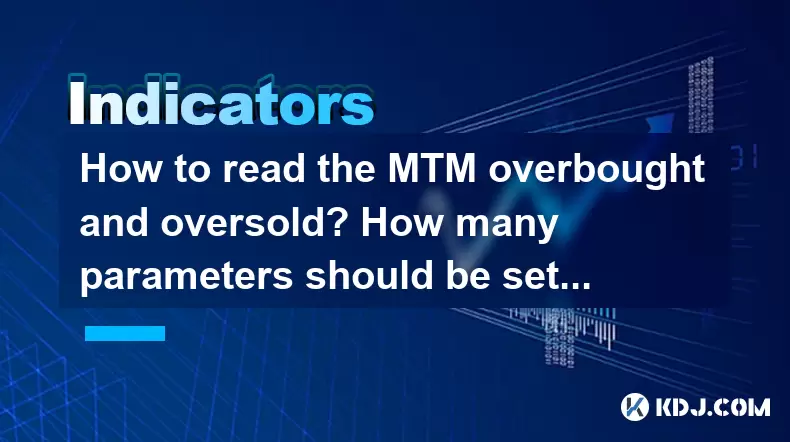
How to read the MTM overbought and oversold? How many parameters should be set?
May 23,2025 at 12:01am
Introduction to MTM IndicatorThe Money Flow Index (MFI), commonly referred to as the MTM (Money Flow Multiplier), is a momentum indicator that measures the strength of money flowing in and out of a security. It is similar to the Relative Strength Index (RSI) but incorporates volume, making it a more comprehensive tool for traders in the cryptocurrency m...
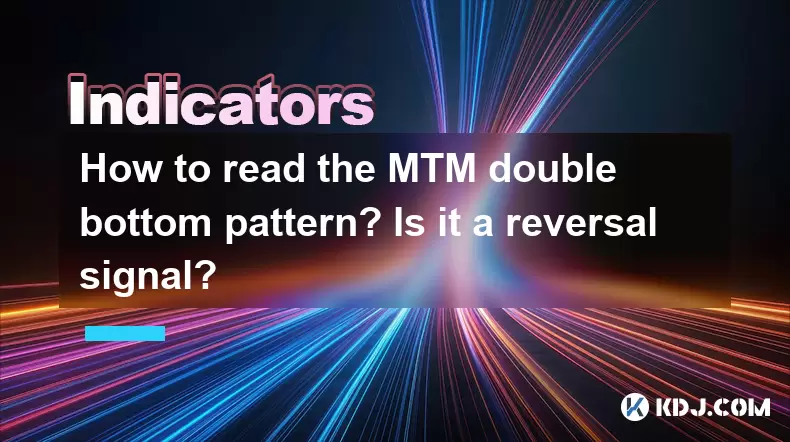
How to read the MTM double bottom pattern? Is it a reversal signal?
May 23,2025 at 03:21am
The MTM double bottom pattern is a technical analysis tool used by cryptocurrency traders to identify potential reversal points in a market trend. This pattern is particularly significant because it can signal a shift from a bearish to a bullish market, providing traders with opportunities to enter long positions. To understand and effectively read the ...
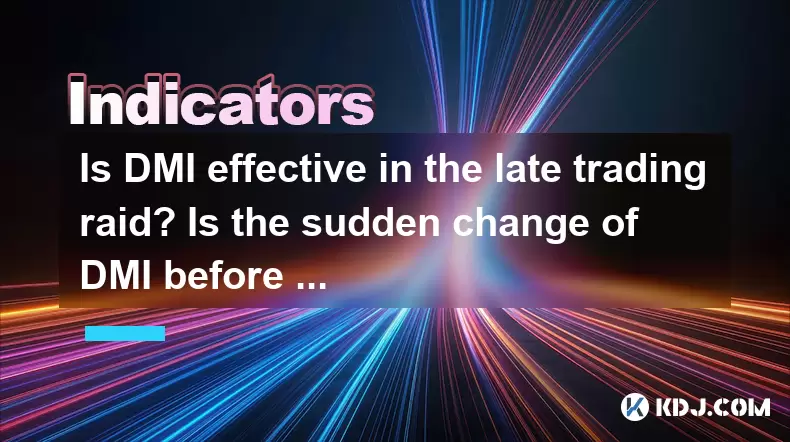
Is DMI effective in the late trading raid? Is the sudden change of DMI before the closing credible?
May 22,2025 at 11:07pm
Understanding DMI in Cryptocurrency TradingDirectional Movement Index (DMI), often referred to simply as DMI, is a technical analysis tool used by traders to assess the strength and direction of a price trend. In the context of cryptocurrency trading, DMI can be particularly useful for identifying potential entry and exit points. The DMI consists of thr...

How to use DMI in the gap position? Is the DMI signal effective after the gap?
May 23,2025 at 02:15am
Understanding DMI and Gap PositionsThe Directional Movement Index (DMI) is a technical analysis tool used by traders to assess the strength and direction of a price trend. It consists of three lines: the Positive Directional Indicator (+DI), the Negative Directional Indicator (-DI), and the Average Directional Index (ADX). The DMI is particularly useful...
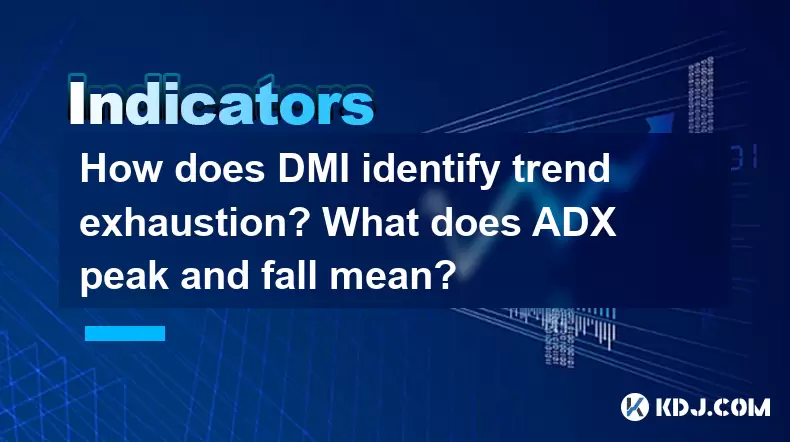
How does DMI identify trend exhaustion? What does ADX peak and fall mean?
May 23,2025 at 04:21am
Introduction to DMI and ADXThe Directional Movement Index (DMI) is a technical indicator developed by J. Welles Wilder to assess the strength of a price trend and identify potential trend exhaustion. It consists of three main components: the Positive Directional Indicator (+DI), the Negative Directional Indicator (-DI), and the Average Directional Index...

What if MTM fails? Which indicator to change?
May 23,2025 at 12:35am
Understanding MTM and Its ImportanceMoney Transfer Mechanism (MTM) is a critical component in the world of cryptocurrencies, especially when it comes to facilitating transactions between different parties. MTM ensures that funds move securely and efficiently from one wallet to another. However, like any system, MTM can sometimes fail, leading to delays,...

How to read the MTM overbought and oversold? How many parameters should be set?
May 23,2025 at 12:01am
Introduction to MTM IndicatorThe Money Flow Index (MFI), commonly referred to as the MTM (Money Flow Multiplier), is a momentum indicator that measures the strength of money flowing in and out of a security. It is similar to the Relative Strength Index (RSI) but incorporates volume, making it a more comprehensive tool for traders in the cryptocurrency m...

How to read the MTM double bottom pattern? Is it a reversal signal?
May 23,2025 at 03:21am
The MTM double bottom pattern is a technical analysis tool used by cryptocurrency traders to identify potential reversal points in a market trend. This pattern is particularly significant because it can signal a shift from a bearish to a bullish market, providing traders with opportunities to enter long positions. To understand and effectively read the ...

Is DMI effective in the late trading raid? Is the sudden change of DMI before the closing credible?
May 22,2025 at 11:07pm
Understanding DMI in Cryptocurrency TradingDirectional Movement Index (DMI), often referred to simply as DMI, is a technical analysis tool used by traders to assess the strength and direction of a price trend. In the context of cryptocurrency trading, DMI can be particularly useful for identifying potential entry and exit points. The DMI consists of thr...

How to use DMI in the gap position? Is the DMI signal effective after the gap?
May 23,2025 at 02:15am
Understanding DMI and Gap PositionsThe Directional Movement Index (DMI) is a technical analysis tool used by traders to assess the strength and direction of a price trend. It consists of three lines: the Positive Directional Indicator (+DI), the Negative Directional Indicator (-DI), and the Average Directional Index (ADX). The DMI is particularly useful...

How does DMI identify trend exhaustion? What does ADX peak and fall mean?
May 23,2025 at 04:21am
Introduction to DMI and ADXThe Directional Movement Index (DMI) is a technical indicator developed by J. Welles Wilder to assess the strength of a price trend and identify potential trend exhaustion. It consists of three main components: the Positive Directional Indicator (+DI), the Negative Directional Indicator (-DI), and the Average Directional Index...
See all articles






















